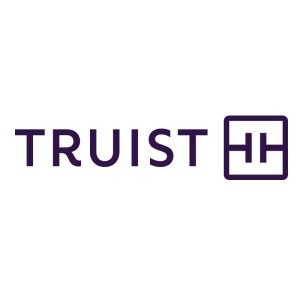What economic conditions should auto dealers be preparing for in 2024? Truist Dealer Services spoke with Mike Skordeles and Jonathan Smoke to get their views on emerging economic trends and their impact on automotive retailing.
Slower Economic Growth and a Rolling Recession
For Skordeles, the big picture is all about interest rates and where they’re heading. While a recession is still the base case entering 2024, he now sees that a soft-ish landing is possible. “From a GDP perspective, we may have a negative quarter or two, but without the corresponding job losses,” he says, “it’s not going to be a classic recession, nor should it be deep if it does happen.”
Rather than across-the-board declines, Skordeles sees signs of a rolling recession, with some sectors of the economy contracting while others expand. “Manufacturing, construction spending and construction hiring are coming back in a big way,” he points out. “Meanwhile, the banking and finance sector is retrenching and seeing layoffs — largely because the mortgage business isn’t coming back any time soon.”
Smoke also expects slower growth in 2024. He anticipates the weak growth environment may result in modest GDP declines but not necessarily job losses. Like Skordeles, Smoke observes that regional variations indicate stronger economic performance in the Southeast and through the Sunbelt, with population declines and job reductions in California, New York and Chicago. In fact, he cautions that California could experience a full-blown recession due to high job losses in the state.
Both economists recognize the strong influence that UAW strikes have had in the industrial Midwest, including Cleveland, Toledo, Detroit and parts of Kentucky. Ripple effects left many industry suppliers furloughing workers, but strike-related economic sluggishness should ease as production resumes. Smoke thinks growth in this region could ramp up more aggressively as incomes rise, noting, “A substantial increase in wages and income is flowing through the industry, and not just for UAW workers — we’ve already seen Toyota preemptively increase wages.”
Strong Labor Markets and Investment-Related Growth
The UAW agreements reflect a labor market that continues to show exceptional strength and resilience. Labor markets remain tight across most industries with wages and incomes still growing, but the rate of growth is slowing down. According to Skordeles, “Business owners say they still have demand. It’s not as strong as it was last year, or even earlier in 2023, but with positions to fill, they’re not letting people go. In fact, they’re likely hiring for some positions.”
At present, the entire country is benefiting from tremendous investment, some of which relates directly to policies and legislation pushed through by the current and previous administrations.
“Tax changes incentivized companies to bring capital and manufacturing back to the U.S.,” explains Skordeles, referring to the Tax Cuts and Jobs Act of 2017. “When you layer on the CHIPS Act, the Inflation Reduction Act and the infrastructure bill, that’s a big push toward growth, especially in the Southeast and Texas.”
Delinquencies Rise, But Loan Performance Remains Strong
Auto loan credit performance can often serve not just as a leading indicator of auto demand but of the overall direction of the economy. “The credit part of the auto market has been an area of concern for a lot of people because we’ve been witnessing record levels of severe delinquencies on auto loans,” says Smoke. “But those delinquencies are not resulting in a corresponding level of expected defaults.”
He cites multiple factors to explain why auto loan performance hasn’t exhibited more significant deterioration. Consumers are painfully aware of how difficult — and expensive — it has become to replace their current vehicles, so they are likely prioritizing auto loans over other forms of debt. Some are trading down to lower-priced vehicles when faced with a financial crunch; others are reaching out to lenders to find solutions before they fall into default.
The critical point, in Smoke’s view, is that consumers have jobs. “Historically, we have seen high delinquencies and high defaults when people are losing their jobs but not when we have an unemployment rate below 4% and continued positive job creation,” he says. “The fact that people are employed resolves a lot of the stress.”
New auto loan demand remains strong. The pool for new loans shows exceptional quality, with higher credit scores than ever before. Despite rate hikes and delinquency concerns, credit flow has been remarkably stable in 2023, providing a solid indication of lenders’ ongoing willingness to lend.
A Constrained Automotive Market
Overall, Smoke believes the automotive market is in a good place. “I think we’re on the cusp of what I’m describing as a constrained recovery,” he says. “We’re optimistic that we’ll see growth in every channel in 2024. Demand is repressed because of affordability due to interest rates at 23-year highs and tighter credit requirements by lenders. On the supply side, we’re not back to the level of production we had previously for new vehicles — I don’t think we’re getting there anytime soon.”
Lower production levels and greatly reduced fleet sales in the last three years have impeded the used car market. The shortage of nearly-new vehicles will contain any acceleration in the depreciation of used cars and keep a floor under used prices. Smoke believes that used car margins will stabilize, even as dealers must work harder to maintain inventory levels.
Shifting Markets for New and Used Vehicles
Increased production and the recovery of fleet sales helped drive a 12% year-over-year increase in new car sales in 2023. Smoke projects a slower pace of 1% to 2% growth in 2024.
Beneath that modest growth are changes emerging in the new car market that could extend beyond 2024. OEMs are shifting their production, catering to buyers who can afford more expensive models and premium configurations. Producing fewer high-priced vehicles keeps manufacturers’ margins high, incentives and discounting low, and vehicle supply tighter.
As one of the biggest surprises in 2023, OEMs have effectively dropped entry-level vehicles from their new vehicle portfolios — only two new vehicles currently carry a sticker price under $20,000. Certified pre-owned vehicle (CPO) sales have been and will continue to fill this gap created in the market. CPO programs have changed eligibility requirements to allow older cars and those with higher mileage to qualify, providing buyers priced out of the new car market with an opportunity to access extended warranties and better financing options.
As manufacturers begin to promote attractive leasing programs to consumers, Smoke expects leasing volumes to lead growth in 2024’s automotive markets: “After effectively abandoning leases over the last four years, OEMs will go back to relying on leasing offers to address affordability, grow volume and boost demand without resorting to even higher incentives.”
The Long Road to Electrification
Smoke expects electric vehicle (EV) sales to continue their current path of growth supported by generous tax credits, government policies and manufacturers’ target production levels.
After years of demand exceeding supply for EVs, production has caught up, creating a potential challenge for dealers who may have a greater days’ supply of EVs as opposed to vehicles with internal combustion engines (ICE). While demand may be enough for California dealers to clear EV inventory, dealers in more rural markets throughout the South and the Midwest — where consumers aren’t yet exhibiting strong demand for EVs — may struggle to move their EV allocations.
On the service side, a more EV-centric market is turning out to be better news for dealers than feared. “The silver lining showing up in the service data is that dealers are making more money servicing EVs,” says Smoke. While today’s service work is weighted toward recalls, he adds, “EVs are more expensive vehicles, prone to having sensor issues and other complex problems. When there is a service appointment, it tends to be a more expensive one.”
Smoke points out that while EVs are steadily gaining share, ICE vehicles are not going away quickly. “We think this is the beginning of what will likely be a 30-year plus journey, where EVs and ICE vehicles coexist in the automotive market.”
Set Your Plans To Prepare for the Conditions in 2024
Planning involves being ready for future conditions while preparing to support both ICE and EV vehicles over the long term. Your Truist Dealer Services relationship manager can help you anticipate what’s on the horizon so you can position your business to make the most of it. Click the link to learn more.
https://www.truist.com/commercial-corporate-institutional/industry-expertise/auto-dealer
Truist Bank, Member FDIC. ©2024 Truist Financial Corporation. Equal Housing Lender.









